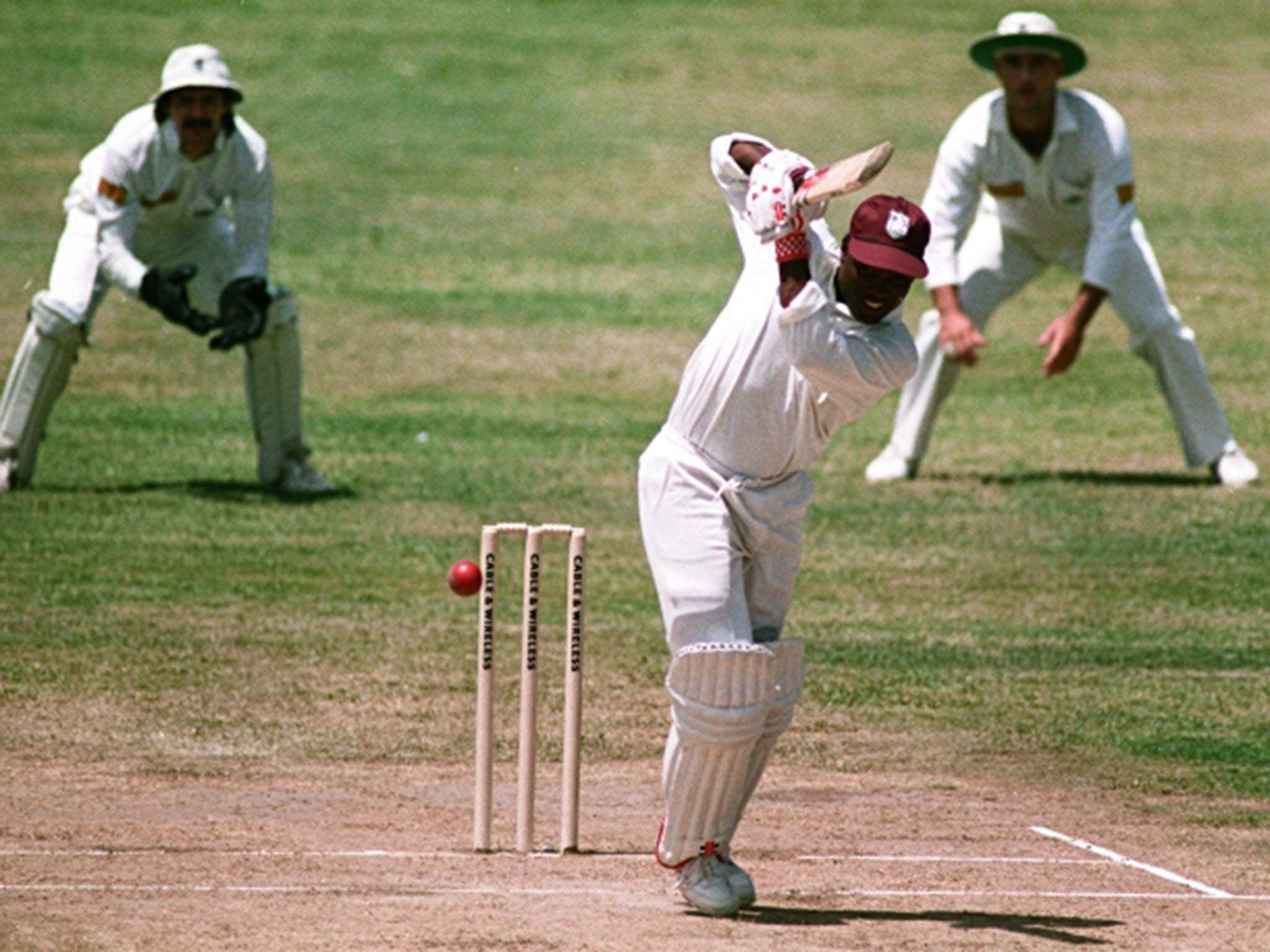The day I nearly flipped when Brian Lara batted right-handed
As the The Independent moves from print to digital only, former sports editor Paul Newman looks at how photography in newspapers has changed in the 30 years since the launch of the newspaper

Your support helps us to tell the story
From reproductive rights to climate change to Big Tech, The Independent is on the ground when the story is developing. Whether it's investigating the financials of Elon Musk's pro-Trump PAC or producing our latest documentary, 'The A Word', which shines a light on the American women fighting for reproductive rights, we know how important it is to parse out the facts from the messaging.
At such a critical moment in US history, we need reporters on the ground. Your donation allows us to keep sending journalists to speak to both sides of the story.
The Independent is trusted by Americans across the entire political spectrum. And unlike many other quality news outlets, we choose not to lock Americans out of our reporting and analysis with paywalls. We believe quality journalism should be available to everyone, paid for by those who can afford it.
Your support makes all the difference.Brilliant photography was one of The Independent’s early strengths. The sports pages were a great showcase for the superb work of, among others, David Ashdown, Peter Jay, Michael Steele and Robert Hallam.
In the newspaper’s early days sports photographs were viewed almost as works of art, with the moment the photograph portrayed often less important than its visual impact. The broadsheet format offered great scope for imaginative use of pictures.
A personal favourite was a very tall and narrow photograph of Pete Sampras serving at Wimbledon which we ran three-quarters of the way down a broadsheet page.
Flick through the sports pages of any modern-day newspaper and you will see coverage of live events dominated by more “conventional” photographs, most of them celebrations or pictures of vital moments: footballers turning away roaring in delight after scoring a goal or with head in hands after conceding; rugby players diving over the try line; tennis players fist-pumping after a big point; motor racing drivers showered in champagne on the podium. Most action photographs are tightly cropped, homing in on the competitors, rather than showing the bigger picture.
Economics dictate that the majority of published pictures are taken by agency photographers. Many of them are superb photographers, but they know what most of their clients will want: those pictures of celebrations and big moments.
Photographs from minor sports, meanwhile, have gone the way of reports from those events. The Independent used to send photographers to a whole range of minor competitions – cyclo-cross races, fell-running competitions, even greyhound racing – just with a view to offering readers different and striking photographs.
Nevertheless, sports photographers today have never had a better showcase for their work. Pictures are used much bigger than they used to be, while improved printing techniques mean that the reproduction of newspaper photographs is much improved. Meanwhile online media can offer the next best thing to looking at a classy print.
Colour pictures have become the norm, but in The Independent’s early days the world was viewed in black and white. That changed in the 1990s, which recalls one of this former sports editor’s worst moments.
The first “live” colour photograph to appear in our pages was a picture from a Test match in the West Indies. However, our photographer had huge difficulties sending us his pictures, which were transmitted by a “wire” machine rather than by email.
With only moments to spare, a photograph finally arrived and we instantly sent it through to the page. It was a picture of a West Indies batsman hitting the ball, but we were in such a rush that I did not even look at the photographer’s caption.
When I opened the newspaper at breakfast the following morning my heart sank. We had published the first picture in history of Brian Lara batting right-handed, the photograph having been “flipped” on its way across the Atlantic.
Join our commenting forum
Join thought-provoking conversations, follow other Independent readers and see their replies
Comments